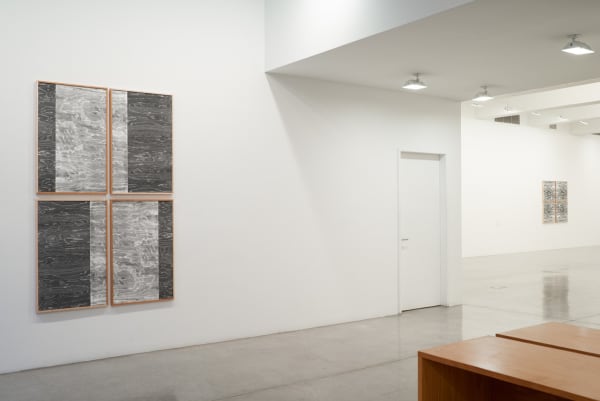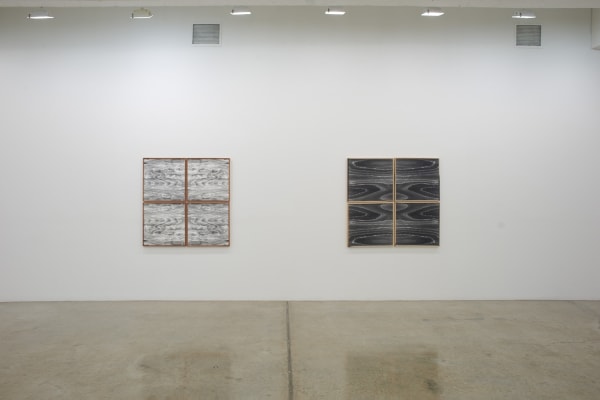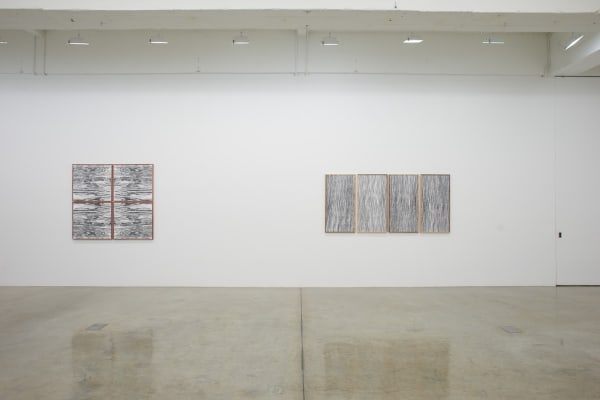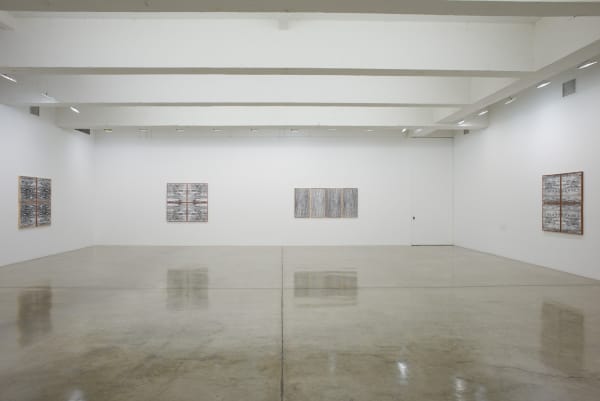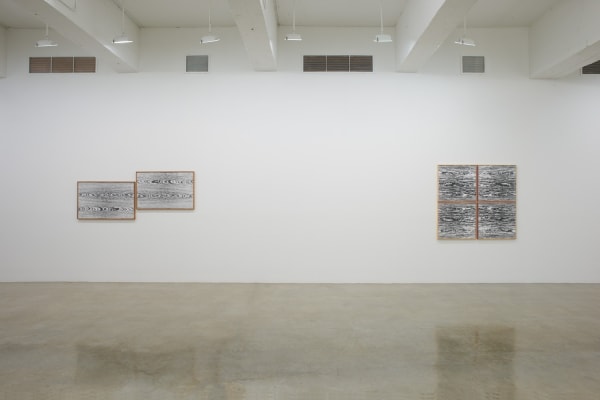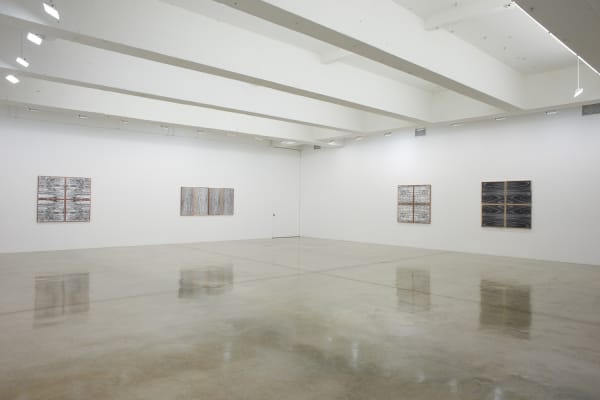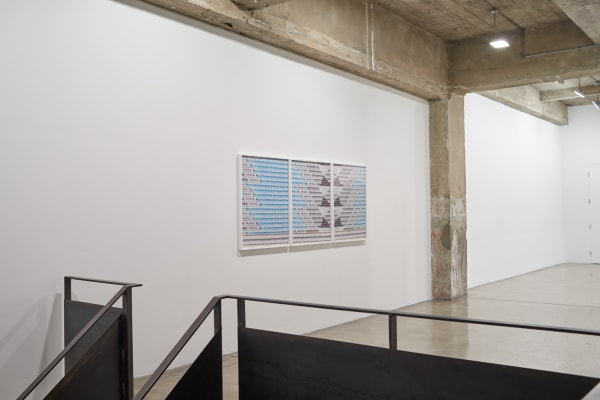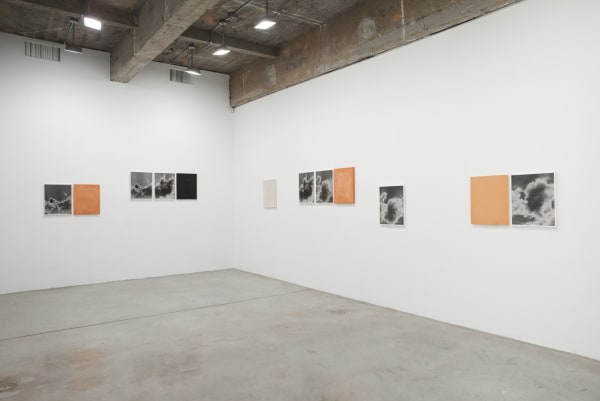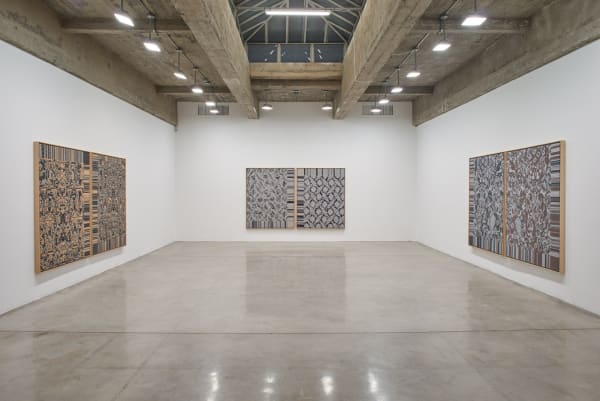LISA OPPENHEIM: GRAMMA: Tanya Bonakdar Gallery, New York
Tanya Bonakdar Gallery is pleased to announce its first exhibition with new gallery artist Lisa Oppenheim, on view January 7 through February 20, 2016. Oppenheim’s presentation with the gallery will be her largest New York gallery exhibition to date and will include new works that continue the artist's innovative engagement with material and process. The exhibition's title Gramma is the Greek word for letter, the root of which is the verb grapho, which translates to write, to draw and to inscribe.
Landscape Portraits is a new series of photograms in which Oppenheim uses very thin slices of wood as negatives applied directly to a photosensitive surface. Oppenheim creates portraits of the internal landscapes of species such as Poplar, Teak, Birdseye Maple and Cherry. Patterns emerge and resemble Rorschach tests, psychedelic patterns, or otherworldly topologies. In a near sculptural consideration of material, the wood portrayed in each image is reiterated in the frame itself—for example, where Poplar is represented in the photograph, the part of the frame surrounding it is made of Poplar. While selecting the materials for the series Landscape Portraits, Oppenheim discovered that difficult or endangered woods are often replicated by processing common woods, like Birch, in order to give the appearance of something more exotic, such as Eastern Red Cedar and Zebrawood. This doubling or confusion is physicalized by Oppenheim through the use of multiple species in some of the frames. Landscape Portraits continues Oppenheim's investigation of the relationship between image, process and material, while also engaging the traditional art historical categories and hierarchies of landscape and portraiture. Categorically, landscape and portrait reference broad genres, but they are also specific to the attributes of place or the persona of the sitter. Oppenheim’s Landscape Portraits engage this duality of the specific and the general, suggesting a multiplicity of readings.
In Guaranteed High Quality Real Wax (Monaliza), fabric becomes the negative to render images based upon mechanically produced textiles. Made in the Netherlands to mimic the handmade batiks of Indonesia, these fabrics are almost entirely exported to West Africa, telling of their complicated origin story. Here the fabrics' patterns are transformed and inverted; collecting an amalgamation of visual references including the binary-coded language of computing, the descendant of the proto-digital process used to create the Jacquard Weave works nearby.
In a reversal of Oppenheim’s usual working method—producing photographs from textiles—the artist produced textiles from photographs at the Textiel Lab in Tilburg, the Netherlands. Specifically, Oppenheim drew her source material from the vast textile collection of pioneering curator and art dealer Seth Siegelaub. Using a traditional Jacquard loom (the first punch card-driven mechanical loom and a precursor to later computing technologies), each work takes its design from two different randomly chosen textiles from the Siegelaub collection. The cards were fed into the machine at the same time, one on top of the other, the same way one would sandwich together negatives in a traditional darkroom enlarger. This process fed conflicting information to the machine during the weaving process, producing segments where nothing is woven, revealing only the cotton warp. Now integrated into the textile design, part of the production that usually remains hidden (the warp) reveals itself, producing a kind of negative space in the pattern. Inverting the order of the punch cards produced a textile that appears as the negative of the first weave. Using binary logic to produce visual imagery, the process relates ideas of the concurrent development of early computing and photography, principles continually explored throughout Oppenheim’s work.
Oppenheim also presents La Quema, a twelve-panel photographic and ceramic tile work installed in the gallery’s second-floor project space. La Quema began with an eponymously titled photograph of a smoking kiln taken by Manuel Álvarez Bravo in Mexico in 1955. From this black and white original, now in the collection of the J. Paul Getty Museum in Los Angeles, Oppenheim produced four different negatives, each isolating a different section of the kiln’s billowing cloud of smoke. She then printed these negatives in the darkroom, exposing the photosensitive paper to the light of an open flame rather than that of a traditional photographic enlarger, collapsing the pictorial content of the photograph with the process of its making. The resulting seven prints, each physically unique and visually distinct, both play with and question the ideal of technical reproducibility long ascribed to photographic media. Five ceramic tiles, precisely scaled to the size of the photographs, both stand in for the absent products of the kiln and reassert the generative power of fire within this visual and material economy.
Lisa Oppenheim is currently included in the group exhibition Photo-Poetics: An Anthology at the Solomon R. Guggenheim Museum, New York. Recently, she has been the subject of solo exhibitions at FRAC Champagne-Ardenne (2015), Kunstverein in Hamburg (2014), Grazer Kunstverein (2014) and notable group exhibitions including Light, Paper, Process: Reinventing Photography, The J. Paul Getty Museum, Los Angeles (2015), AIMIA|AGO Photography Prize Exhibition, Art Gallery of Ontario, Toronto (2014), and New Photography at The Museum of Modern Art (2013). Her work is held in the permanent collections of the Museum of Modern Art, New York, The Solomon R. Guggenheim Museum, New York, The J. Paul Getty Museum, Los Angeles, Israel Museum, Jerusalem, and MIT List Visual Arts Center, Cambridge, Milwaukee Art Museum, Cincinnati Art Museum, among others. In 2014, Oppenheim was the recipient the AIMIA|AGO Photography Prize from the Art Gallery of Ontario and the Shpilman International Photography Prize from the Israel Museum.
